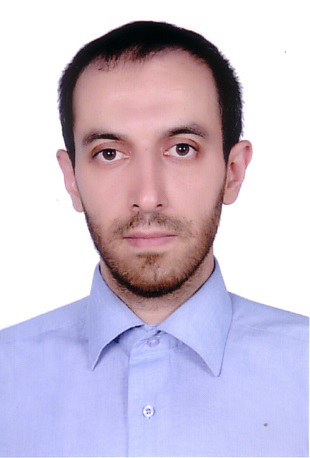

- 维尔切克量子中心
- Quantum Theory
- 理科楼5号楼801室
- mehabdi@sjtu.edu.cn
Academic Career:
2022 - present: Associate Professor; Shanghai Jiao Tong University (China)
2018 - 2022: Assistant Professor; Isfahan University of Technology (Iran)
2016 - 2018: Postdoc; University of Ulm (Germany)
2014 - 2016: Postdoc; Technical University Munich (Germany)
2012 - 2014: Research Associate; Iran University of Science and Technology (Iran)
Qualifications:
2007 - 2012: PhD in Physics; Sharif University of Technology (Iran)
2010 - 2011: Visiting PhD researcher; University of Camerino (Italy)
2005 - 2007: MSc in Physics; Sharif University of Technology (Iran)
2000 - 2005: BSc in Physics; University of Tabriz (Iran)
Grants and Awards:
Young Thousand Talent Program (won 2020, claimed 2022 due to Covid19 travel restrictions)
Humboldt Research Group Linkage Programme (2020-2023) [with Prof. Dr. Martin B. Plenio]
Alexander von Humboldt Postdoctoral Fellowship (2014-2016)
We theoretically investigate quantum behavior of photons, phonons, spins, and some other systems. The goal is to bring such systems into interaction and build-up hybrid quantum systems which are beneficial in exploration of quantum foundation and can be employed in quantum technologies, such as quantum sensors and quantum communications.
Quantum Optomechanics: From the beginning of the millennium, ability in fabrication of nanomechanical systems from one hand and tremendous progress in control and assembly of micro and nano sized cavities, on the other hand, has brought the scientist inevitably to their hybridization. Giving birth to the field of quantum optomechanics. Such systems have so far attained many successes regarding quantum mechanical behaviors in light–mechanics. From the ground state cooling of macroscopic mirrors to microwave–mechanical entanglement. Yet, there are many fields to be explored. One of our goals in the theoretical quantum optics group is to propose and provide recipe for employing novel opto-, electro-, and spin-mechanical systems in exploration of foundational quantum theories.
Color Centers: Wide band gap solids like diamond are transparent in their pristine form. However, some point defects can introduce inter-band-gap energy levels that can support narrow frequency optical transitions and emit light quanta, hence the color centers. Such emitters have recently been observed in layered hexagonal boron nitride (hBN) material. The emissions from hBN membranes are not fully understood, yet. Hence, one of our ongoing projects is studying the origins of these emissions by means of ab initio computations and group theory analysis. We then propose systems that exploit the electronic and spin properties of the emitters in quantum technology.
Continuous Variables: Secure quantum communication, quantum simulation, and quantum computation are the quantum theory gifts that have to be fully exploited. There are various strategies on this way. They can be basically divided into discrete variable (finite Hilbert space dimension) and continuous variable (infinite Hilbert space dimension) methods. Each of which possess their advantages and disadvantages. This have brought physicist to a third strategy; the hybrid DV–CV approach. In our group, we are working on DV, CV, and hybrid quantum information processing systems and protocols from quantum repeaters to quantum simulators.
Most of my publications can be found on arXiv and all of them in Google Scholar
and all of them in Google Scholar . Here is a selection:
. Here is a selection:
F. T. Tabesh, Q. Hassanzada, M. Hadian, A. Hashemi, I. A. Sarsari, and M. Abdi, Strain induced coupling and quantum information processing with hexagonal boron nitride quantum emitters, Quantum Sci. and Technol. 7, 015002 (2022).
M. Abdi, Continuous-variable multipartite vibrational entanglement, Phys. Rev. A 103, 043520 (2021).
M. Abdi, Dynamical quantum phase transition in Bose-Einstein condensates, Phys. Rev. B 100, 184310 (2019).
M. Abdi and M. B. Plenio, Quantum Effects in a Mechanically Modulated Single-Photon Emitter, Phys. Rev. Lett. 122, 023602 (2019).
M. Abdi and M. B. Plenio, Analog quantum simulation of extremely sub-Ohmic spin-boson models, Phys. Rev. A 98, 040303(R) (2018).
M. Abdi, J.-P. Chou, A. Gali, and M. B. Plenio, Color centers in hexagonal boron nitride monolayers: A group theory and ab-initio analysis, ACS Photonics 5, 1967 (2018).
M. Abdi, M.-J. Hwang, M. Aghtar, and M. B. Plenio, Spin-Mechanical Scheme with Color Centers in Hexagonal Boron Nitride Membranes, Phys. Rev. Lett. 119, 233602 (2017).
M. J Seitner, M. Abdi, A. Ridolfo, M. J. Hartmann, and E. M. Weig, Parametric Oscillation, Frequency Mixing, and Injection Locking of Strongly Coupled Nanomechanical Resonator Modes, Phys. Rev. Lett. 118, 254301 (2017).
M. Abdi, P. Degenfeld-Schonburg, M. Sameti, C. Navarrete-Benlloch, and M. J. Hartmann, Dissipative Optomechanical Preparation of Macroscopic Quantum Superposition States, Phys. Rev. Lett. 116, 233604 (2016).
M. Abdi, M. Pernpeintner, R. Gross, H. Huebl, and M. J Hartmann, Quantum State Engineering with Circuit Electromechanical Three-Body Interactions, Phys. Rev. Lett. 114, 173602 (2015).
M. Abdi and M. J. Hartmann, Entangling the motion of two optically trapped objects via time-modulated driving fields, New J. Phys. 17, 013056 (2015).
M. Abdi, S. Pirandola, P. Tombesi, and D. Vitali, Entanglement Swapping with Local Certification: Application to Remote Micromechanical Resonators, Phys. Rev. Lett. 109, 143601 (2012).
We have open positions for Postdoctoral researchers, PhD students, and MSc students. If you are a motivated student/researcher and are interested in one of research topics listed above do not hesitate to drop me an email (mehabdi@sjtu.edu.cn) with your full CV (including a full list of publications), a research statement, and the contact information of at least two references. We will review your application and contact you in less than a month for further processing.

